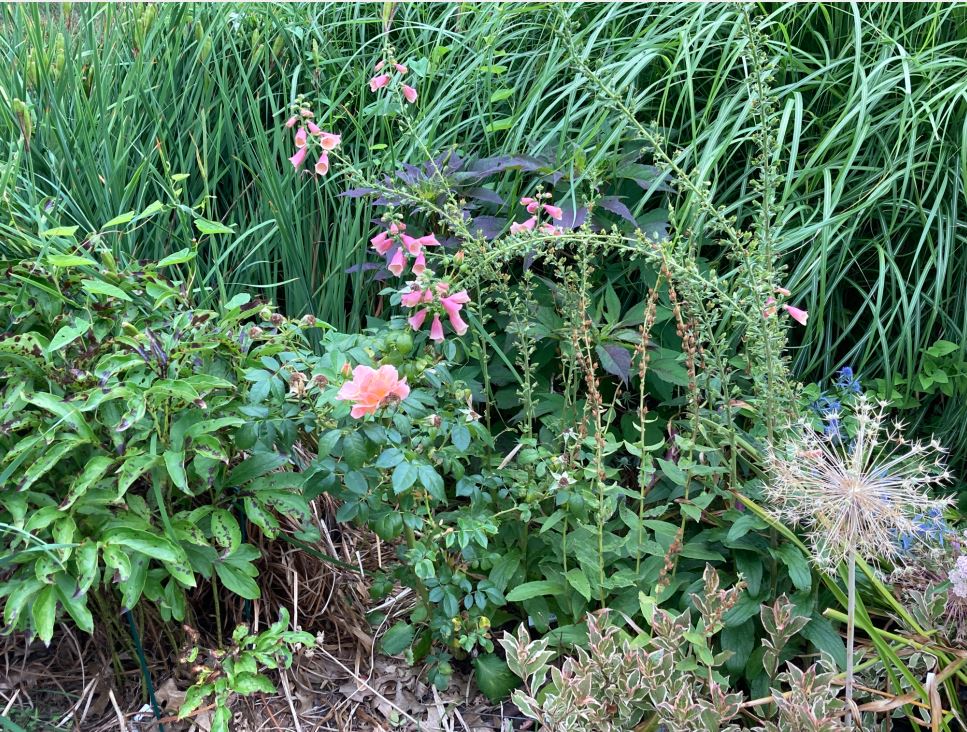While I wait for Spring to feel like Spring, I’m thinking about what to add to my garden. I’ve tried many foxgloves over the years and frankly, my favorites are the perennials rather than the biennials even though they are spectacular to look at.
Digitalis has been a staple of gardens for many years. Long before it appeared as an ornamental in English gardens, it was planted in medieval monastery gardens as a medicinal since it was well known that, properly prepared, it was a remedy for heart problems. It has also been used as a poison by those who lived closer to the “dark side”. Deer do not even taste this perennial due to its poisonous nature.

While there are many species of Digitalis, the one in English gardens is Digitalis purpurea (Common Foxglove), a biennial that is native to the British Isles and hardy to zone 4. This Foxglove sports large trumpets on a four to five foot stem that is held above a large basal rosette of hairy, ovate foliage. These leaves can be five to seven inches long so space the plants accordingly. The June-blooming flowers are usually purple with deeper colored or white spots within but if you cut down the stems after the flowers fade and supply sufficient moisture, a second flush of bloom may appear in the fall. At that time, let the deadheads go to seed. As with any biennial, you may want to plant two years in a row to ensure blooms every year. There are several cultivars from which to choose.
Similar in nature is D.x mertonensis (Strawberry Foxglove) although it is a bit smaller at three to four feet. This hybrid has longer leaves than either of its parents (D.purpurea and D.grandiflora) as well as larger flowers. It is a perennial but usually lives only for two to three years so seeding should be encouraged. The coppery pink flowers are unique in color, definitely not strawberry red.

For many years, I enjoyed Digitalis thapsi ‘Spanish Peaks’ which is a true perennial. Its foliage is not as hairy and I find that its rosy pink blossoms appear in at least three flushes on branched stalks if I cut down the stalks at the end of each bloom period.



Weigela ‘My Monet Purple Effect’in September in my south-facing garden.
Digitalis grandiflora (ambigua) is also a true perennial. Its foliage is quite different from the previous species. The leaves of this one are long and lined. The large flowers are pale yellow and bloom in June on two-foot stems. If cut back, it will rebloom periodically throughout the summer. Hardy to zone 3, this is one of the toughest species. The cultivar ‘Carillon’ is twelve inches to fifteen inches tall. Similar in nature is ‘Arctic Fox Rose’. A bit taller at two feet, the rose pink flowers bloom from June through October if deadheaded, even in full sun as long as there is sufficient moisture.
There are a few other species such as D.ferrruginea, D.obscura and D.parviflora which are basically foxgloves for the collector and for those who like orange or rusty-colored flowers.
Most foxgloves do best in partial shade and average to moist soil. They combine beautifully with ferns and with ornamental grasses such as Chasmanthium, Luzula or Carex.
Pick a Foxglove to be the highlight of your June part shade garden and thereafter if you plant a perennial species rather than a biennial one.


1 Comment